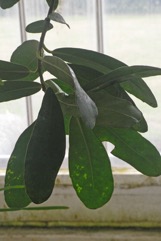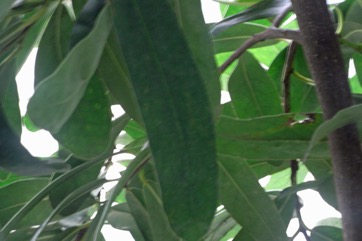Madagascar brexia

A tropical plant. It occurs in bush and scrub near the beach. It can also be at the edges of mangrove swamps. It can grow up to 100 m above sea level. It has been grown up to 1,500 m above sea level. It needs full sun and a reasonably fertile soil. It is best in a well-drained, moist soil. It can tolerate alkaline soils, salty soils and salt spray. It can grow in arid places.
Also known as:
Anagafuma, Mfukufuku, Mfurugudu, Mkurufu, Mpumbuti, Mutamonga, Pohon bresia madagaskar, Umatunga, Venana, Voatanga, Voatalany
Synonyms
- Thomassetia seychellarum Hemsley
- Vanana madagascariensis Lam.
- Brexia acanthifolia Noronha ex Tul. nom nud.
- Brexia amplifolia Noronha ex Tul nom. nud.
- Brexia chrysophylla Sweet nomen nudum
- Brexia digyna Noronha ex Tul nom. nud.
- Brexia heterophylla Bojer nom. illegit.
- Brexia humbertii H. Perrier
- Brexia madagascariensis (Lam.) Ker Gawler var. mossambicensis Oliver
- Brexia microcarpa Tul.
- Brexia ovatifolia Noronha ex Tul. nom synon.
- Brexia spinosa Lindl.
- and others
Edible Portion
- Fruit
Where does Madagascar brexia grow?
Found in: Africa, Asia, Comoros, East Africa, Hawaii, Indonesia, Madagascar, Mozambique, Pacific, Seychelles, South Africa, Southern Africa, Tanzania, United States, Zimbabwe
Notes: There is only one Brexia although some scholars recognise nine or eleven. Some put this one in the Grossulariaceae, Brexiaceae, Escalloniaceae and other families.
Growing Madagascar brexia
Cultivation: It is usually grown from seed. The fruit can float in sea water for many months and the seeds will still grow.
Edible Uses: The fruit softens as it ripens to become edible.
Production: In Tanzania ripe fruit are available in November and December.
Nutrition Info
per 100g edible portion| Edible Part | Energy (kcal) | Protein (g) | Iron (mg) | Vitamin A (ug) | Vitamin c (mg) | Zinc (mg) | % Water |
|---|---|---|---|---|---|---|---|
| Fruit | - | - | - | - | - | - |
Madagascar brexia Photos


References
Bot. Reg. 9: t. 730. 1823
Jardin, C., 1970, List of Foods Used In Africa, FAO Nutrition Information Document Series No 2.p 123
Lovett, J. C. et al, Field Guide to the Moist Forest Trees of Tanzania. p 30
Palgrave, K.C., 1996, Trees of Southern Africa. Struik Publishers. p 202
Royal Botanic Gardens, Kew (1999). Survey of Economic Plants for Arid and Semi-Arid Lands (SEPASAL) database. Published on the Internet; http://www.rbgkew.org.uk/ceb/sepasal/internet [Accessed 16th April 2011]
Ruffo, C. K., Birnie, A. & Tengnas, B., 2002, Edible Wild Plants of Tanzania. RELMA p 170
Schatz, G. E. and Lowry, P. P., 2004, A synoptic revision of Brexia (Celastraceae) in Madagascar. Adansonia 26(1) p67-81 (Also as Brexia humbertii)
Staples, G.W. and Herbst, D.R., 2005, A tropical Garden Flora. Bishop Museum Press, Honolulu, Hawaii. p 349 (Drawing)
Sukarya, D. G., (Ed.) 2013, 3,500 Plant Species of the Botanic Gardens of Indonesia. LIPI p 160
World Checklist of Useful Plant Species 2020. Royal Botanic Gardens, Kew